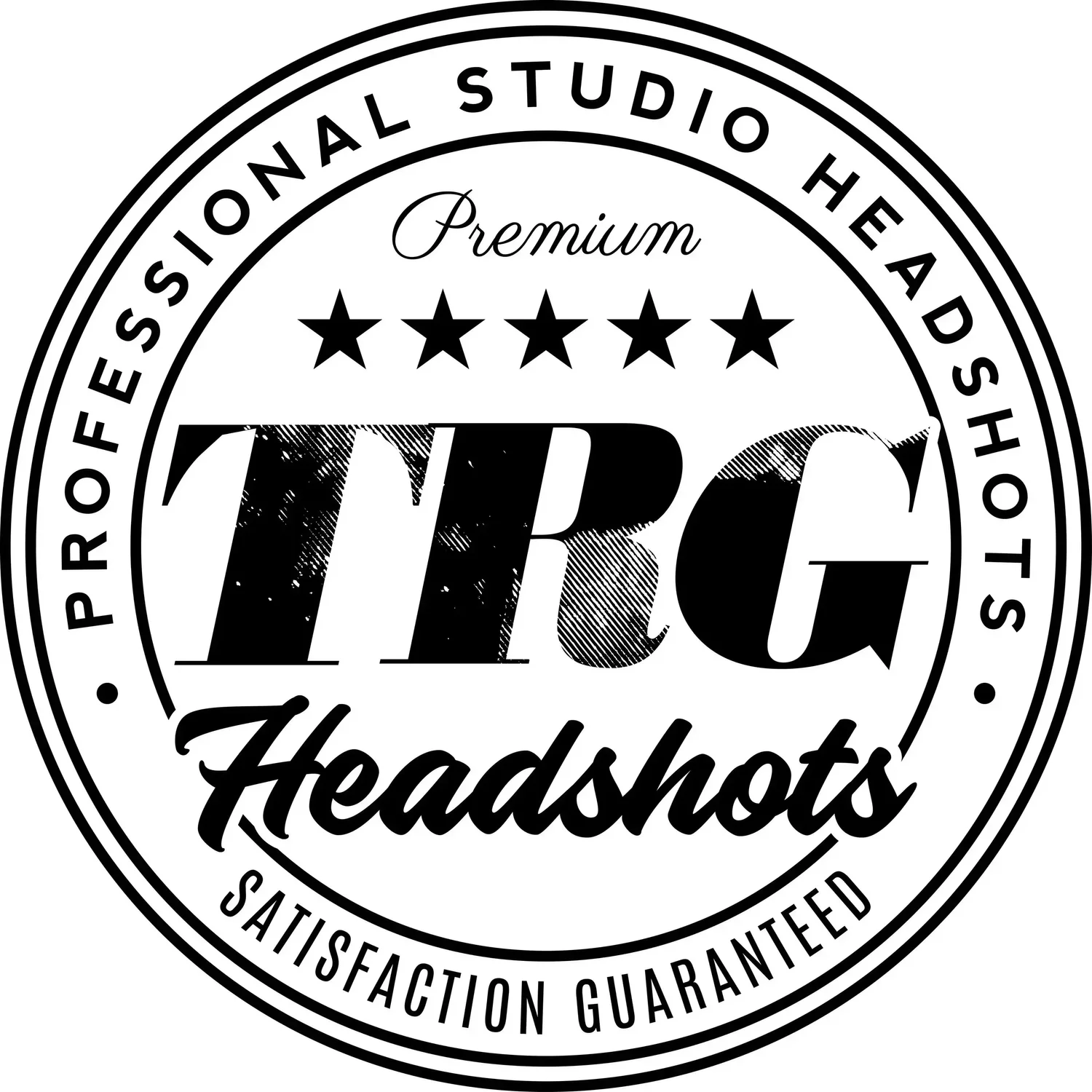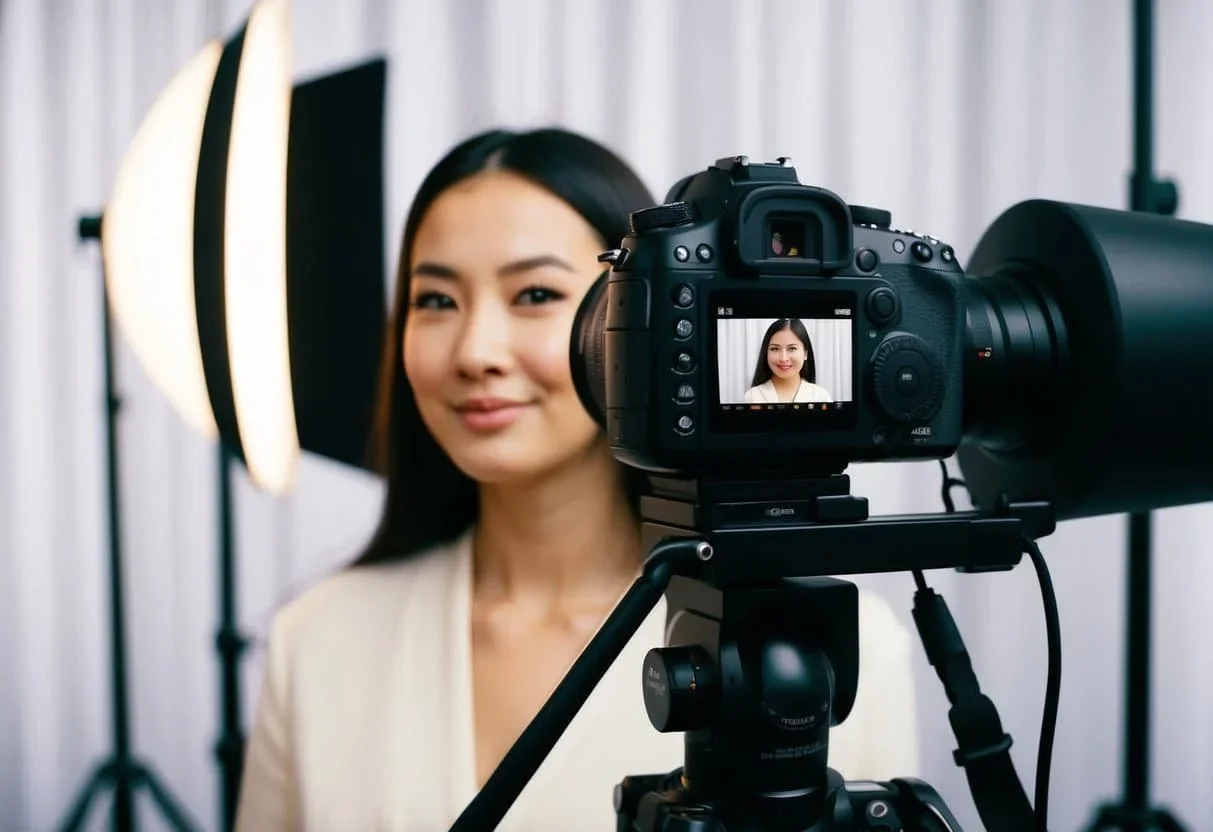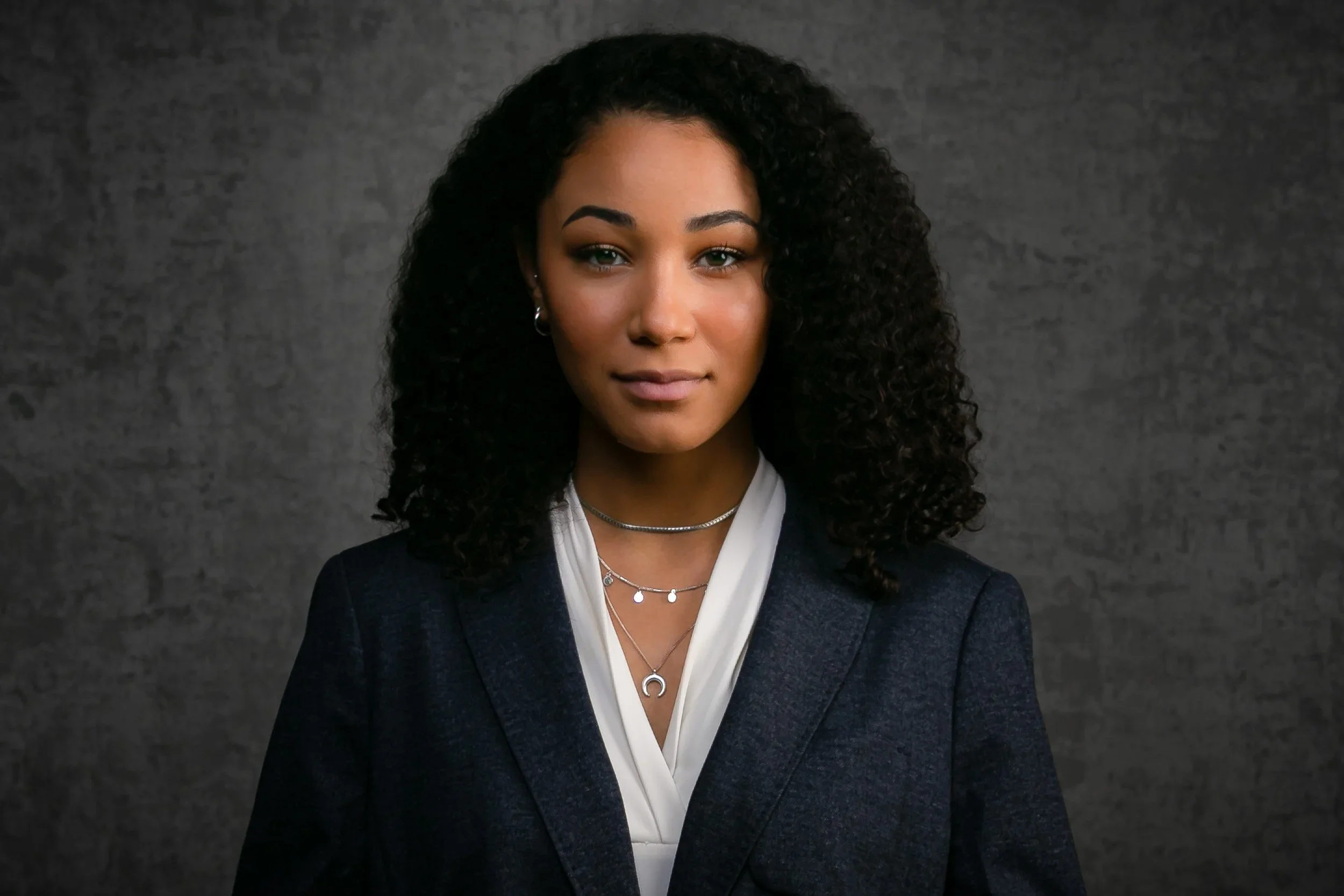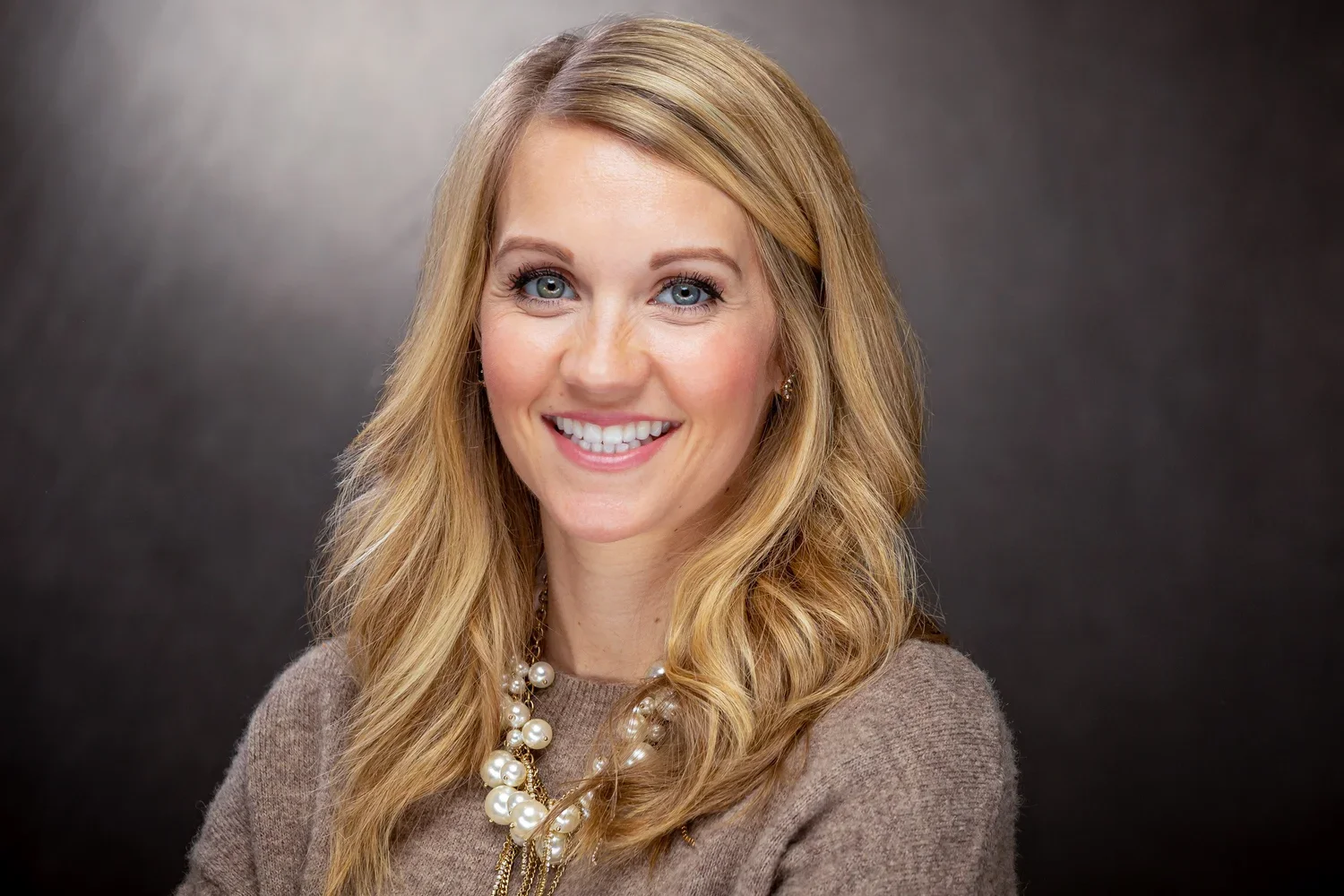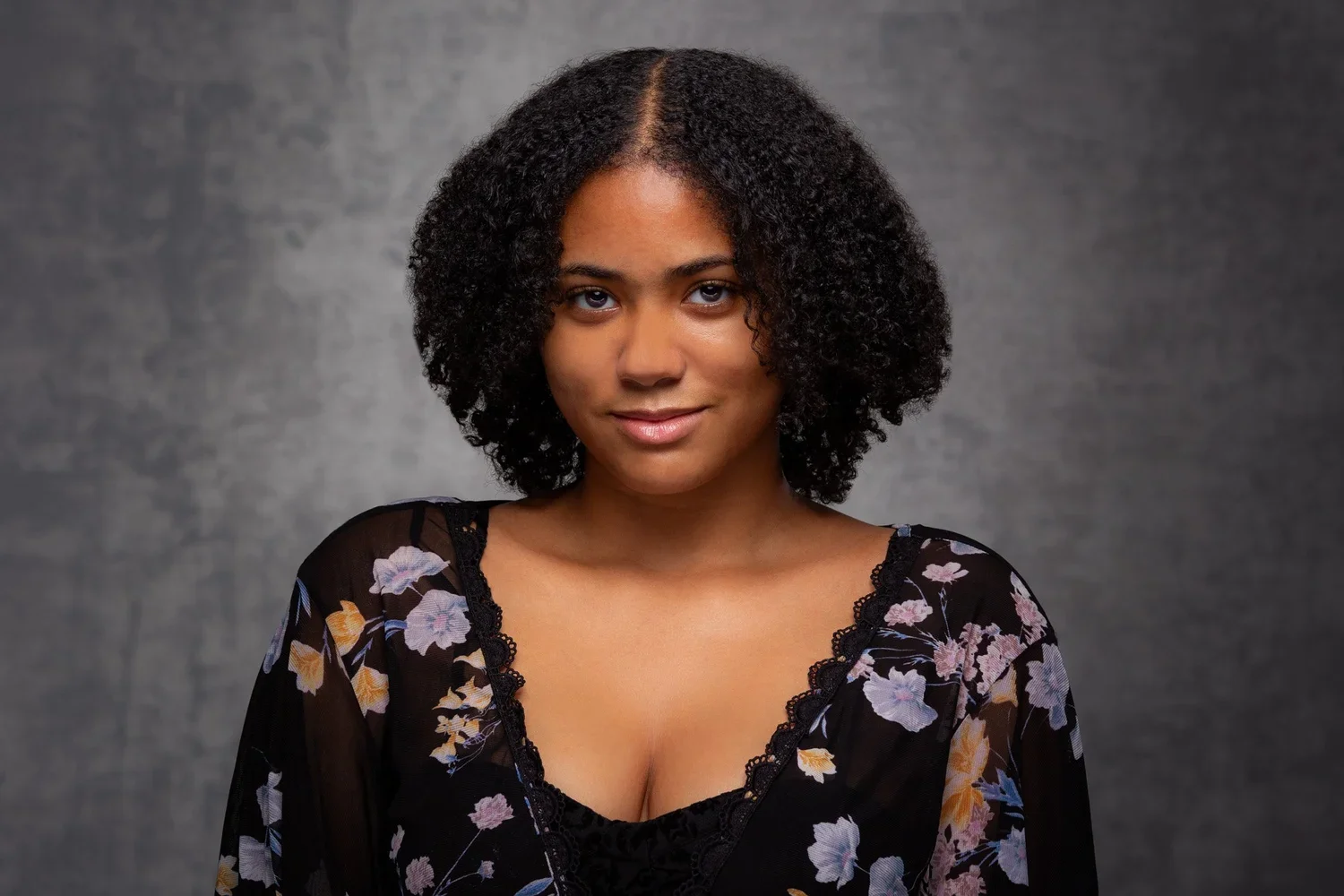Top Poses for Female Modern Professional Headshots
I've found that the power of female modern professional headshots comes down to a few key details that can set a person apart in a crowded field. A standout headshot isn’t just about looking polished—it’s about looking like yourself, showing confidence, and suggesting approachability. Achieving this balance requires more than just standing in front of a camera with a forced smile.
What Makes Female Modern Professional Headshots Stand Out
Some ways you make sure your female professional headshots feel distinct and modern:
Prioritize authentic expression: The best poses for female modern professional headshots showcase your true personality through understated yet genuine facial expressions.
Pay attention to posture and body language: an open stance, gentle tilt, or relaxed shoulders instantly add energy and communicate self-assurance without feeling stiff.
Use subtle, simple styling: Outfits and makeup should reflect how you actually look in a professional setting, rather than leaning too hard on trends that might distract.
Adapt the pose to industry and role: Creative professionals might use a more relaxed tilt or texture in their wardrobe, while finance or legal experts might keep everything more formal and direct.
A modern female headshot shows both polish and individuality—never one without the other.
Here's how different elements impact how memorable a headshot feels:
| Element | Impact on Standout Quality | Notes |
|---|---|---|
| Natural, warm expression | High | Feels inviting and real |
| Thoughtful styling | Medium | Avoids distraction from the face |
| Dynamic angles or slight movement | High | Adds personality, breaks repetition |
| Overly formal posing | Low | Can feel dated or impersonal |
At the end of the day, the greatest poses for female modern professional headshots give a sense of both professionalism and personal character. It’s about being seen as capable but also memorable, just by being yourself on camera.
Prepare Your Posture: Body Language Essentials for Female Modern Professional Headshots
When you first step in front of a camera for a headshot, you can feel every inch of tension in your body. Good posture isn’t just about standing up straight—it’s about sending the right message through every part of your body, from your head to your hands. The small things in our body language—shoulders, chin, and even breathing—add up to the whole impression we give in a photo.
There are a few things you always keep in mind before the photographer even snaps a picture:
Stand or sit with your shoulders relaxed and slightly back. Slumping looks tired, but locked-back shoulders look forced.
You should try to angle your body slightly to the side, not straight on, since posing at an angle to the camera instantly creates a more natural look.
Your chin goes just a touch forward and down—trust me, it feels weird, but it helps avoid a double chin.
Just make sure your hands aren’t awkwardly hanging. If seated, placing hands on your knees or lightly clasping them works wonders.
Most important: you breathe and try to laugh a little between shots, so your posture stays loose and not stiff.
If you tense up or overthink things, the headshot ends up looking forced—and no one wants to look like they tried too hard for a LinkedIn photo! Relaxing into your own stance, even if it takes a few minutes, always brings out a more genuine image.
Posture isn’t just about standing; it sets the tone for how professional and approachable you appear. If you put these body language basics into practice, you’re already halfway to getting a headshot that stands out from the usual, stiff options.
Classic Direct vs. Three-Quarter Angles in Female Modern Professional Headshots
When I help clients with their modern professional headshots, the angle of the pose can dramatically shift the whole mood of the photo. The big question usually comes up: straight-on or three-quarter angle? Each option tells a slightly different story about the person, even when the lighting and setting are similar.
Let me break down the differences I tend to see and guide people through:
| Angle Type | Look & Feel | What’s Best For | Pro Tip |
|---|---|---|---|
| Classic Straight-On | Confident, clear, timeless | Corporate, LinkedIn, resumes | Watch your posture & relax your shoulders |
| Three-Quarter Angle | Dynamic, friendly, modern | Creative roles, networking | Turn shoulders just a bit—don’t twist neck |
Some differences to keep in mind when choosing between the two:
The straight-on angle builds instant connection. Eye contact is straightforward and often reads as honest and strong—but, if you’re feeling a bit stiff, it sometimes shows.
Three-quarter angles feel a bit more relaxed and can create the illusion of a slimmer face. One shoulder closer to the camera adds dimension and can soften facial lines, making the photo a little livelier.
Classic direct is best when you want to play it safe and traditional, especially for business environments. The three-quarter pose offers subtle personality; it’s often my pick for jobs in tech, design, or anything a bit outside the corporate box.
No matter which angle you choose, having someone coach you through small adjustments—like where to point your chin or how much to rotate—is key. Small changes can take a headshot from "just okay" to memorable.
Really, picking an angle isn’t about following rules but about matching the pose to how you want to be seen. Both have their place—I always test both during a session to see which one truly fits the person in front of the camera.
Soft Expressions & Smiles: Bringing Warmth to Female Modern Professional Headshots
When you sit for a headshot, always remember that a soft smile or a relaxed expression makes all the difference. A natural, gentle smile often sends the message that I’m approachable and authentic—never forced or stiff. This simple change can shift the mood of the entire image, making you look more relatable to potential employers, clients, and colleagues.
Getting that warm, inviting look isn’t just about smiling with your lips; it’s about letting your eyes do some of the work too. I find that thinking of a pleasant memory or simply exhaling before the shot helps you avoid a stiff, awkward grin. Here’s what usually helps:
Genuinely think about something that makes you happy – it relaxes your face and lights up your eyes.
Keep your jaw and lips slightly loose, rather than clenched.
Don’t hold a smile too long. If it feels fake, ask your photographer for a quick reset or a joke to lighten the mood.
A smile can be subtle—it doesn’t have to be broad. Softening my features with just a hint of a grin, or even a closed-mouth smile, feels friendly and understated. Occasionally, you’ll try a gentle, thoughtful look for more serious roles, but never with tension.
| Expression | Perception by Others | Recommended Use |
|---|---|---|
| Subtle smile | Warm, approachable | General professional |
| Broad smile/laugh | Energetic, open | Creative workplaces |
| Closed-mouth smile | Polished, trustworthy | Corporate/finance |
| No smile, soft eyes | Calm, thoughtful | Academia, serious roles |
If you can find that balance, your headshot is going to work for you long after the session ends.
Hands & Arms: Natural Gestures for Female Modern Professional Headshots
I've noticed hands and arms have a sneaky way of making or breaking modern headshots. If you are not careful, awkward hand placement or stiff arms can make a strong professional image look forced or even distract from your face. Finding a natural feel is key for genuine, standout portraits.
Here's what you should focus on during shoots to keep hand and arm poses looking modern and approachable:
Relaxed Crossed Arms: Gently cross your arms without squeezing too tightly. This sends a message of confidence but doesn’t look tense. The trick is not hugging yourself but letting your hands fall easily, so it's strong without being closed off.
Hand-Frame Pose: Sometimes you use your hands to frame your chin or jaw, like resting fingertips lightly near your cheek without pressing. It adds personality and directs attention to your face. Well-groomed hands are a must for this; chipped nail polish is surprisingly obvious in headshots!
Pretend Pockets: I love the understated look of "pretend pockets"—just placing your hands near where pockets would be (common in women's clothing lacking real pockets). This creates an open angle at your elbows and a relaxed, unforced posture.
Chin Rest: When you try this, you aim for a light touch under your chin, using just your fingertips. No smooshing your face. It makes the pose softer and more thoughtful without causing odd marks on your skin.
There have been plenty of times when you overthought hand positions, but the best shots almost always happened when you relaxed a bit, trusted the process, and let your hands follow your mood.
For even more precise tips on modern posing, you've checked out insider headshot secrets from top photographers.
Every headshot is a chance to shape your first impression. You remind yourself to treat your hands with the same attention as your face, giving them a clear purpose but keeping it true to your style. It’s these little adjustments that help your photos look professional—and like you.
Over-the-Shoulder & Side Glances: Dynamic Poses for Female Modern Professional Headshots
Sometimes, you want to show a bit of personality without losing your professional edge. That’s where the over-the-shoulder and side-glance headshot poses for female professionals come in. These aren’t your classic straight-on shots—instead, they add movement and visual interest to the photo.
Dynamic shoulder and side-angle poses bring movement and more personality to modern female headshots, making them especially memorable in competitive professional spaces.
Here are a few tricks you rely on when trying these out:
Rotate your body about 45 degrees away from the camera, then look back gently over your shoulder.
Keep the neck relaxed to prevent a stiff or strained look—imagine you heard someone behind you call your name.
Play with different expressions; a warm, natural smile or even a thoughtful, friendly expression works best.
Try subtle side glances where the gaze isn’t directly at the camera—this can feel more candid and less posed.
Over-the-shoulder poses can make you feel more natural, plus they soften the overall look of a headshot. If you’re after something different from the usual, this is a quick way to stand out—without feeling stuffy or stiff. These dynamic headshot poses female professionals use are a go-to for a modern, approachable vibe.
Seated vs Standing Poses: When to Use Each for Female Modern Professional Headshots
I find that choosing between seated and standing poses for professional headshots changes the whole feel of the session. The right pose can make you look not just confident, but truly comfortable and relaxed—two things people definitely notice in a headshot. Whenever you prepare for a session, remind yourself that posture isn't just about how straight you sit or stand, but also about what fits the story you want to tell about yourself as a professional.
Here’s how I break down the decision:
Standing Poses
Send a message of energy and confidence—great if you want to show leadership skills and presence
Work well with more casual shots where leaning or shifting weight adds variety
Seated Poses
Help you look approachable and steady, excellent if you are going for a welcoming vibe
Feel less stiff, especially if you cross your legs or lean slightly forward
Offer a chance to adjust arm positioning naturally—hands in lap, on the armrest, or casually on the desk
Sometimes, a session benefits from mixing both, but there are moments where one wins out
| Pose Type | Best For | Typical Impressions |
|---|---|---|
| Standing | Leaders, execs, public-facing | Authority, energy |
| Seated | Mentors, coaches, therapists | Warmth, openness |
In my experience, seated headshots can ease nerves faster, but nothing beats the bold look a good standing pose delivers for an assertive first impression.
Understanding which pose matches your style and goals is just one piece—there are more nuances covered in this breakdown of professional headshots for modern women if you want to go deeper. Test both at your next session. Sometimes the best pose surprises you.
Props, Fashion & Styling Tips to Enhance Female Modern Professional Headshots
When you are getting ready for a headshot session, always spend extra time planning props, outfits, and styling because these little steps can either make or break the final photo. The right details let your personal style and professionalism come through in ways that look intentional but never overdone.
Here’s how I break it down:
Props: Keep props simple — a laptop, a notepad, a favorite book, or an item from your career to add context without clutter. The prop needs to make sense for your professional image.
Fashion Choices: Pick solid colors over busy prints so the focus stays on my face. Make sure your clothes fit well and are comfortable for sitting or standing. Layers like jackets or thin sweaters help add a bit of structure and depth.
Accessories: Minimal jewelry works best. If you wear something flashy, it might steal the spotlight. Instead, prefer small earrings or a watch.
Makeup and Hair: You should stick close to your daily look — nothing wild or new on shoot day. It’s tempting to go for something bold, but you find that a touch of powder and defined brows look great on camera. You should always smooth any flyaways with a bit of hairspray or a quick touch from a comb.
When you feel comfortable in what you are wearing and using as a prop, your confidence shows up, and that’s exactly what I want the headshot to capture.
Frequently Asked Questions
-
I suggest wearing simple, solid colors that look good on you and fit well. Avoid busy patterns and logos because they can distract from your face. A blazer or a neat blouse is always a safe choice. Make sure your clothes are clean and ironed.
-
If you feel awkward, try to relax your shoulders, take a deep breath, and remember to smile gently. Sometimes, start with natural movements, like turning slightly to the side or gently crossing your arms. Practicing in front of a mirror before the photoshoot helps you get comfortable with different poses.
-
Both standing and sitting work well for headshots. When you stand, you can show more energy and confidence. Sitting helps you relax and can make your posture look natural.
-
Using props can add personality to your headshot if they fit your job or brand. For example, holding glasses or a notebook can look natural if you use them often at work. I make sure the prop does not take attention away from your face.
-
You should keep your makeup simple and natural. You should use enough to even out your skin, highlight your eyes, and add a bit of color to your lips. Heavy makeup can look unnatural in photos, so choose soft tones that match your skin.
-
A clean and simple background works best for a modern headshot. You should prefer light or neutral colors that make you stand out. Sometimes, a soft blur or a plain wall helps keep the focus on your face.
